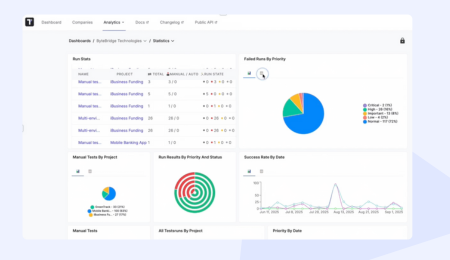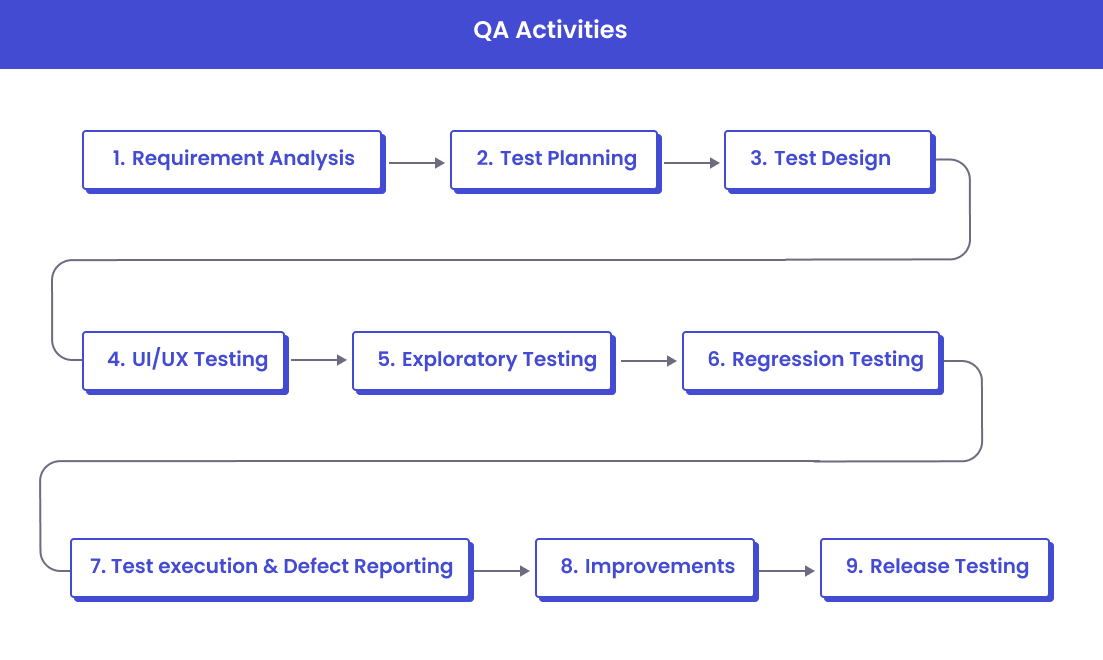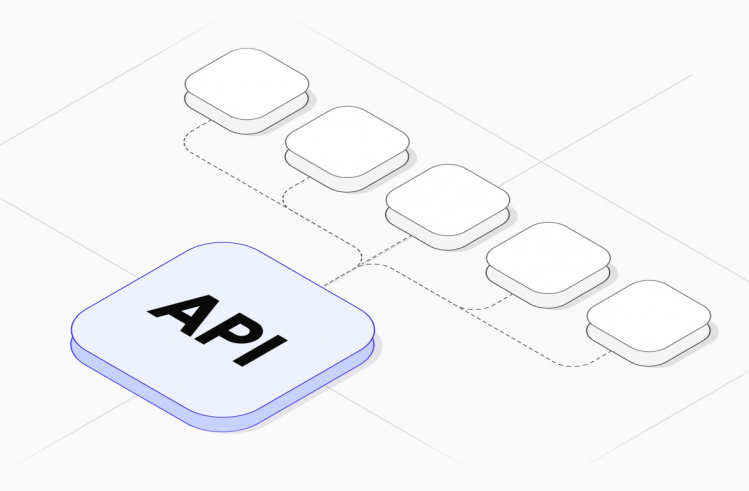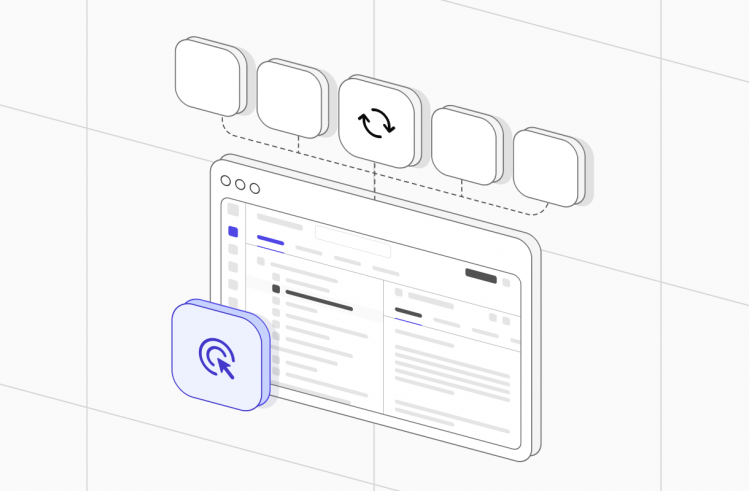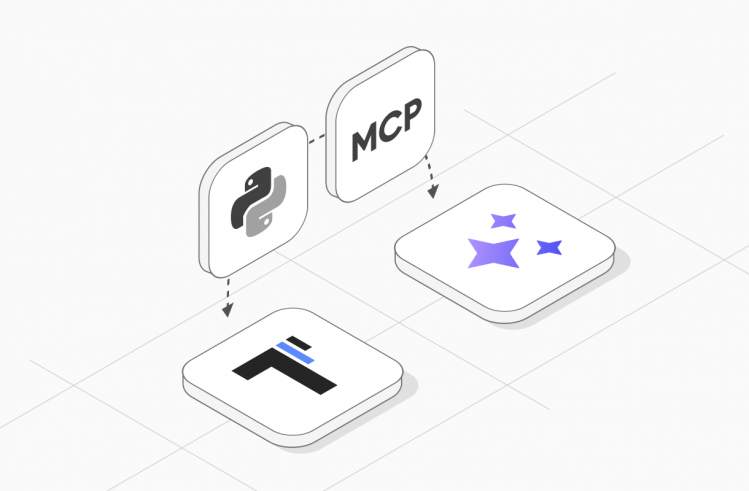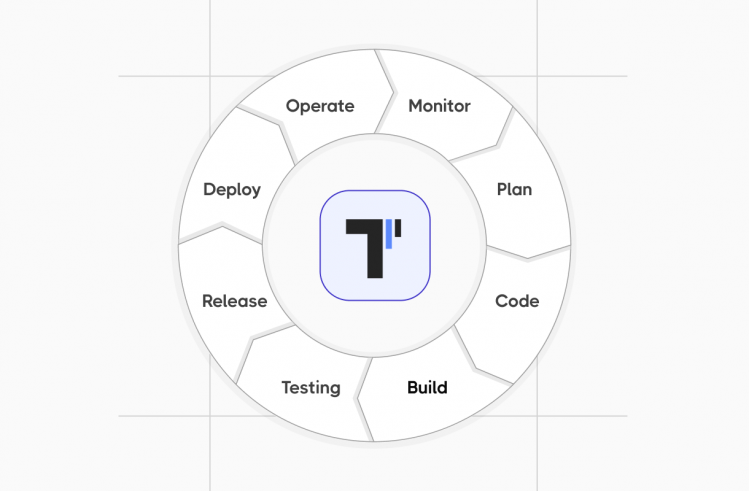Understanding the differences between quality assurance vs quality control ensures that quality standards are met and provides transparency in the workflow for all participants. With a clear distinction between these concepts, team members will understand the set of activities set before them, and clients can engage in the quality management process.
The Importance of Adhering to Quality Requirements
Both QA and QC play crucial roles in the software development lifecycle. With a comprehensive approach, quality control and quality assurance activities can bring numerous benefits to your business:
- Increased ROI: Eliminating software defects is a complex and costly process. The later they are discovered, the more resources will be needed to fix them. Therefore, comprehensive measures to prevent defects and identify them early can reduce costs, thereby increasing return on investment. Necessary to maintain operational efficiency.
- Enhanced Customer Satisfaction: The modern software market is characterized by intense competition. In today’s product development environment, to gain the trust of your target audience and achieve expected revenue, you must create a final product that meets user expectations, providing them with an excellent customer experience and high quality.
- Quality of products and Brand Reputation Protection: Releasing a single finished product of insufficient quality can risk losing your users forever. In contrast, a high-quality product will positively impact your reputation, encouraging consumers to return to your solutions time and again.
- Reduced Time to Market: In our rapidly changing world, developers may struggle to keep up with new trends and consumer demands. Thus, the quicker a product is released, the more likely it is to remain relevant, maximizing the full potential of your project. Fewer defects mean less time spent on fixing them. Therefore, product quality should not be neglected.
Having addressed the role of quality management in your business’s success, it’s time to delve into the topic of our material and explore the differences between quality assurance and quality control
Definition of Quality Assurance
What is QA?: QA is a series of activities conducted during the development and manufacturing process aimed at ensuring that the product meets defined software quality standards and regulatory requirements.
These activities are part of the organization’s quality management system and must confirm that the product is ready for market release.
Quality Assurance focuses on the process of creating digital solutions and serves as a guarantee that the technologies and practices used will help achieve the main goal: to develop a digital product that satisfies the needs of end users and meets client expectations.
QA supports effective QA through clear standard operating procedures (SOPs) and a documented quality management plan.
Definition of Quality Control
QC – is a set of methods applied to check the product’s compliance with quality parameters upon completion of the production process. These methods are aimed at identifying potential defects in the software solution for subsequent resolution.
Quality Control requires that each application undergo comprehensive testing. If any defects are identified during this process, they must be reported immediately to the project manager, who will decide whether the product should be released to the market or rejected.
Differences Between Quality Assurance & Quality Control
To clearly demonstrate quality assurance vs quality control examples, we have chosen several parameters for comparison:
→ Approach to quality management
→ Focus area of QA/QC
→ Actions needed to achieve the desired result
→ Timing of activities
→ Responsible parties
Let’s take a closer look at each of the points mentioned above ⬇️
Approach to Quality Management
Quality management combines QA (Quality Assurance) and QC (Quality Control) processes to deliver products that meet customer expectations.
Quality control vs quality assurance:
Quality Assurance employs a proactive approach to quality management, as QA activities begin early in the development process and the software development life cycle is aimed at preventing defects that may arise.
Quality control, on the other hand, uses a reactive approach. It focuses on identifying actual errors for their subsequent resolution. Both contribute to the effectiveness of your quality management system and overall operational efficiency.
Focus Area of QA/QC
QA vs QC in software testing, we should admit here that Quality Assurance focuses on process design and the production processes necessary to achieve the desired goal. It includes a series of activities needed to prevent errors.
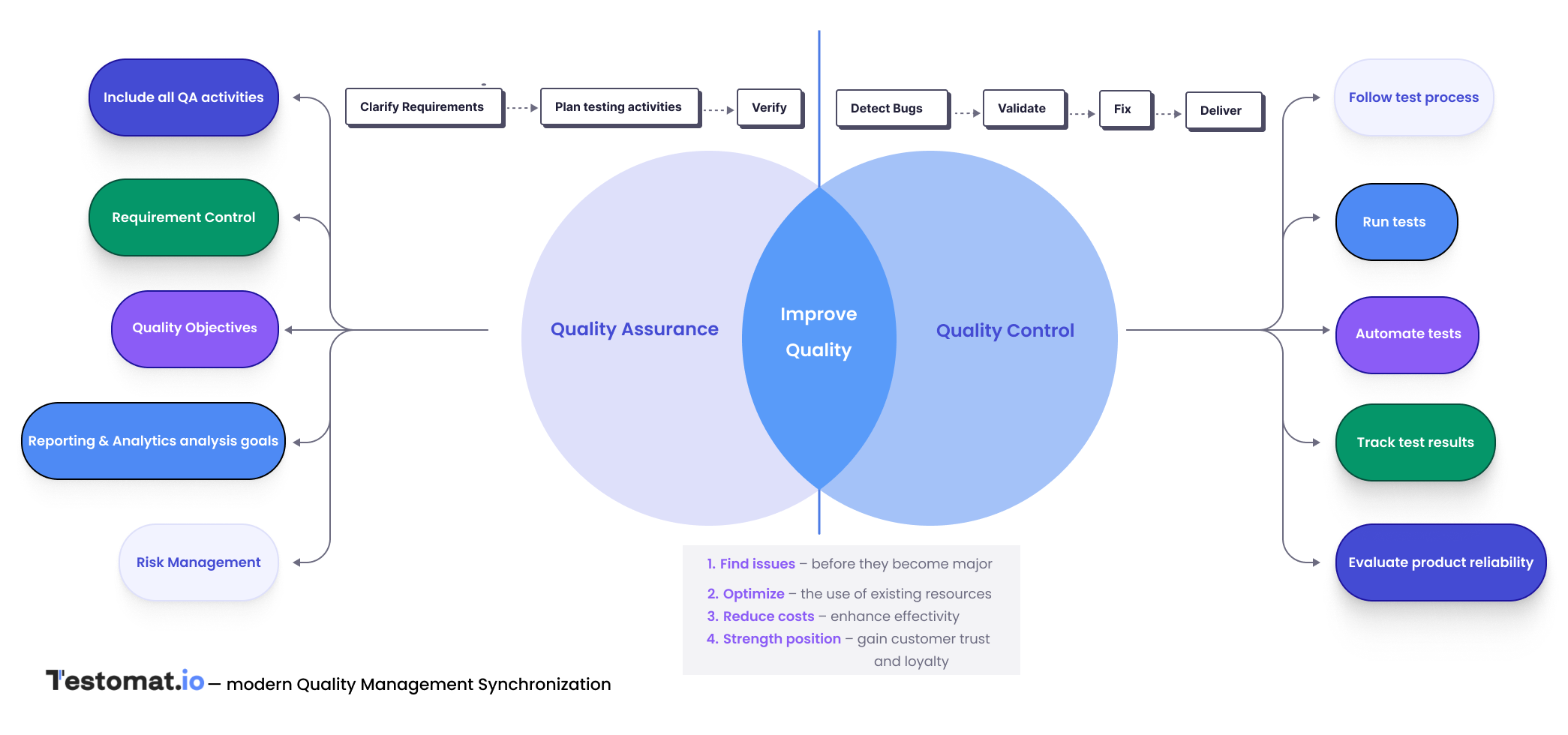
In contrast, Quality Control is centred on final products. Its task is to identify defects that have already occurred, which may affect customer satisfaction and align with client expectations; it’s error fixes post-factum, in other words. Both require collaboration with project management and alignment with QMS documentation.
Actions Needed to Achieve the Desired Result
QA vs QC: Quality Assurance (QA) activities are different within the testing process and are conducted according to the testing strategy.
These are examples of each type of activity that support the overall QA strategy.
It may include:
-
Focus of the testing process Requirement Analysis – reviewing functional and non-functional product requirements, checking their sufficiency and realism;
- Test Planning – developing a testing strategy considering the project’s features and complexity.
- Test design – creating test cases to cover all established quality requirements.
- User interface (UI) testing involves confirming that the various UI components, such as buttons and labels, work as specified in the requirements.
- Exploratory testing – an approach to software testing that emphasizes the personal freedom and responsibility of individual testers exploring the App. It is contrasted with scripted testing, where testers follow predefined steps.
- Regression testing – manual testing is consuming, so identify repetitive test cases suitable for automation. It allows running tests faster and more frequently. Integrate automation into the continuous integration (CI) pipeline to increase delivery.
- Test execution & Defect reporting – team runs the test cases and logs any identified defects in a bug tracking test management system or other kind of electronic quality management system. Additionally, test automation tools are employed to execute tests and automatically generate reports.
- Improvements – bug fixes, maintaining testing documentation and other current improvements in the testing process to prevent defects.
- Release stage – once a new version of the software product is ready for release, the testing team performs smoke testing to ensure the release candidate is stable and checks for critical issues. They then run test suites to verify the new functionality and issue a test result report.
Timing of Activities
Quality Assurance is characterized by the fact that all actions span different times across the entire SDLC and take place throughout the entire development process of the digital solution. Specialists must continuously pay attention to QA activities to prevent problems and ensure an adequate level of product quality.
The QC process is not as comprehensive. It comes into play during the final stage of the production cycle, when the software product is ready for testing.
Responsible Parties
The development process involves distinct roles for specialists responsible for various activities.
In the QA process, the following roles may participate:
- QA Manager or QA Lead: This person is responsible for overseeing the implementation of quality assurance strategies on the project, planning testing, managing the QA team, and organizing collaboration with other departments to ensure the integrity of the development process.
- QA Engineers or QA Analysts: These specialists are responsible for developing testing plans, writing test cases and scenarios. Their duties also include implementing QA processes, maintaining testing documentation, and continuously improving processes to achieve set goals.
- Test Automation Engineers: If the project involves repetitive tasks, it is advisable to automate them to increase productivity. Test automation engineers handle this by writing scripts, setting up the appropriate tools, and ensuring that the results of automation align with QA strategies.
- Business Analysts (BA): This is an essential participant in the QA process, as they are responsible for gathering and documenting product requirements. The quality of their work determines whether QA engineers can write test cases that meet business needs. The BA also acts as a liaison between the client, development team, and QA specialists.
- Project Manager or Product Owner: This role is one of the most responsible on the project. This specialist is accountable for ensuring that the digital solution meets required standards throughout the software development lifecycle. They also prioritize features based on their impact on the quality of the final product.
In QC activities, the following roles participate:
- Manual and Automation Testers: These specialists perform automated test cases and manual testing on the project. They are required to document all identified software defects and report them to the development team and project manager for resolution.
- Test Engineers: Their responsibilities include setting up the testing environment, developing complex test sets (for example, for system or integration testing), and collaborating with the development team to ensure the reliability and high productivity of the software product.
- DevOps Engineers: Their duties include providing the infrastructure necessary for performance, load, and stress testing, as well as supporting the proper functioning of CI\CD pipelines.
- Release Managers: They oversee the final stage of the SDLC before the software product is released. They are also responsible for quality management after the release and addressing any errors that arise during this period.
Additionally, there are specialists who participate in both QA and QC processes. These include software developers, who, along with QA Engineers, may write and execute test cases (for example, for unit testing) while taking on the role of testers.
Cross-functional specialists also include Scrum Masters, who ensure seamless communication between QA and QC teams, developers, clients, and other stakeholders.
To visualize the differences between QA and QC, we have prepared a comparative table outlining the features of both processes.
| Parameter for comparison | Quality Assurance | Quality Control |
| Approach | Proactive process | Reactive process |
| Focus Area | Process | Product |
| Type of Activities | Actions aimed at preventing defects | Activities for identifying existing errors |
| Timing of Execution | Throughout the entire SDLC | Upon completion of a specific development cycle or before the final release |
| Process Participants | QA team (QA Manager, QA Engineers, Test Automation Engineers, BA, Project Manager) | QC team (Testers, Test Engineers, DevOps Engineers, Release Managers) |
| Objectives | Ensure the correctness of actions by the entire team in achieving set goals | Check if the team’s results meet expectations |
| Impact on End Quality | Contributes to achieving the desired quality outcomes | Checks product work results against quality standards |
Despite the clear differences between quality assurance and quality control, these concepts cannot be viewed in isolation from each other. They represent two equally important components of a quality management system, essential for ensuring the development of quality products and delivering customer satisfaction.
This perspective is supported by certain similarities between quality assurance and quality control. We will discuss these similarities next.
Similar in Quality Assurance and Quality Control Processes
In comparing quality assurance vs. quality control, we can easily identify not only their differences but also certain similarities.
Here are some of them:
- Adherence to Standards. Both processes are based on specific quality standards that the final product must meet. The only difference is the approach to achieving this goal, as we mentioned earlier.
- Focus on Achieving a High-Quality Product. QA and QC activities share a common objective — to achieve high end quality in digital solutions. This leads to the conclusion that both processes contribute to a better customer experience and help maintain the company’s market position.
- Prevention of Critical Mistakes. Quality assurance allows for the identification of errors in the early stages of the SDLC, thereby reducing the costs associated with fixing them. Quality control aims to eliminate problems after the digital solution has been released to the market, as bugs discovered by end users can cost the company not only extra expenses but also its reputation.
- Continuous Improvement. Both processes allow for the identification of areas for improvement. This could include gathering quality requirements, testing, preparing documentation, etc. As a result, your team can enhance the efficiency of its processes and potentially achieve better outcomes.
Both quality assurance and quality control processes are critically important in a company’s quality management system for software development.
These processes cannot be viewed separately, even though they differ from one another. Only the comprehensive application of QA and QC will ensure a better customer experience and help outpace competitors by releasing high-quality products to the market.
Frequently asked questions
What is the difference between quality control and quality assurance?

Quality assurance is a proactive process that focuses on preventing defects at all stages of the software development lifecycle. Quality control is a reactive process aimed at detecting errors that occur after completing a specific development cycle, before the final release, or even afterward. The specialists involved in QA and QC also differ.
Which comes first, QA or QC?

QA is the process that precedes QC activities. This is because QA accompanies all stages of the SDLC, while QC is performed when the software product is ready for testing. This fact can also be explained from the perspective that quality assurance is focused on preventing defects, whereas quality control is focused on identifying existing errors.
